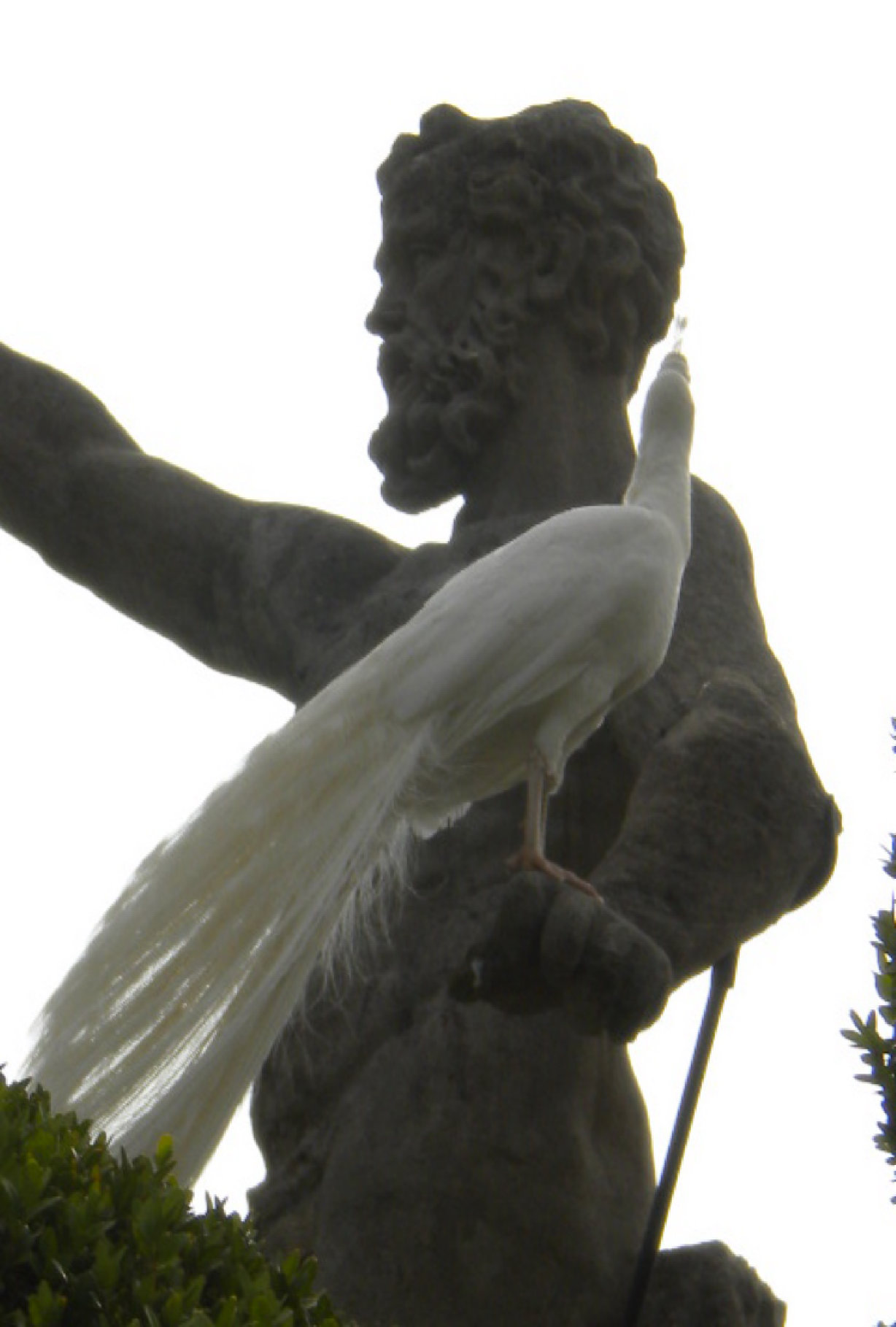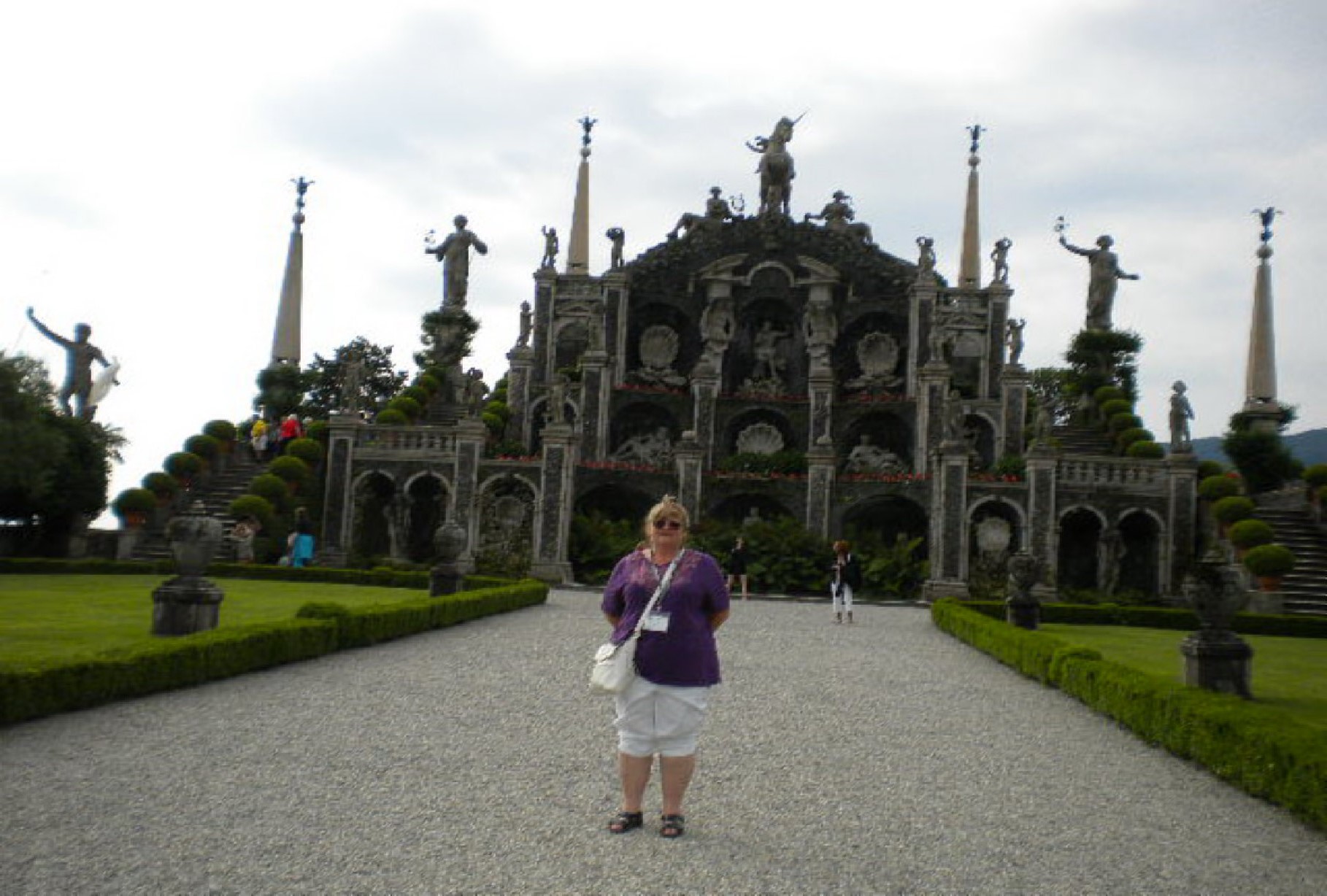My husband and I were finally able to indulge in that long-awaited sojourn to Italy this past summer. One of the most captivating places we were fortunate enough to visit was Isola Bella, an island located in Lago Maggiore in the resort district of Northern Italy. Isola Bella is renowned for its historic baroque palace and adjoining formal gardens which have belonged to the famous Borromeo family since the 1600s. In fact, Charles Borromeo named Isola Bella, which means “beautiful island,” in honor of his wife, Isabella. Today the Borromeo family maintains their major residence in Milan, but they do spend a few weeks on Isola Bella every summer.

The palace boasts historic significance. One of the rooms was the site of the 1935 Stresa Conference in which Italian dictator Benito Mussolini met with British and French diplomats in their united attempt to intimidate Germany out of launching World War II. The endeavor failed when Mussolini double-crossed his fellow diplomats, attacking Ethiopia and joining forces with Hitler. Napoleon Bonaparte and his wife Josephine add another historic dimension to Isola Bella. They were once guests at the palace during the French emperor’s reign. In fact, tourists can visit Napoleon’s bedroom, which purportedly contains the very bed in which the imperial couple slept. Unfortunately, the bed is the only piece of furniture in the vast, vacant, echoing bedroom space. Just about the only other feature of the room is a picture window which, although relatively insignificant by itself, draws the eye to a spectacular view of the glistening lake below and the verdant Italian mountainsides in the distance.

Which brings me to an observation. Despite the owners’ annual pilgrimage to their impressive palace on their picturesque island, the house does not feel at all like a home. Its stone walls and floors and sparsely furnished rooms do not convey the slightest feeling of hospitality or comfort. The tourist wanders from one cold, empty, echoing space to the next throughout the structure. Why invite the public in to view an interior so uninviting? I can only speculate on the Borromeos’ reasons, but the visit generates in me the hope that our own home, although not nearly so

palatial, is at least a place of warmth and comfort to those who visit us. Every home, even if sparsely furnished, should convey convivial intentions. And while we’re meditating on lessons learned, let’s hope that the family history created in our homes is more noble than that of a duplicitous Italian dictator.
The tour of the palace eventually leads the visitor to expansive and magnificent formal gardens. The well-manicured lawns, meticulously pruned shrubs, and intricately-designed hedge patterns are truly a delight. And the profusion of brilliant flowers—not to mention the very exotic Chinese white peacocks—dazzle the eye. It’s all so precise, so controlled. But then, baroque is all about controlling nature, isn’t it? But what a contradiction, to find so much strict design embedded squarely in the middle of the abundant natural beauty of the crystal blue lake and the uncultivated mountains. But, I reflect, isn’t that the very purpose of every man’s castle? To provide an island of our own preferred construction and arrangement, where we can take refuge from the sometimes uncivilized environment that surrounds us? Lastly, I feel compelled to add a comment about the copious statuary erected throughout the gardens. Too many statues! Flora, whether growing naturally or by controlled design will always create a comforting sense of serenity. This is true whether the greenery consists of a few potted plants on an urban patio or expansive lawns and gardens. Too many man-made objects, on the other hand, create a discordant sense of clutter. I carried away from the gardens on Isola Bella a resolve to make my own modest little estate as attractive as possible, but to avoid imposing an order so strict or so cluttered that it negates the natural beauty of the surroundings.

I apologize if it appears I am too critical about a place that truly is so charming. But I would assert that travel is supposed to enlarge and enlighten. My sojourn to the palace and gardens of Isola Bella has certainly enlarged my personal perspective on the essence and substance of home. Because, perhaps, we might all agree that, east or west, home is best!

Love your photos 😀